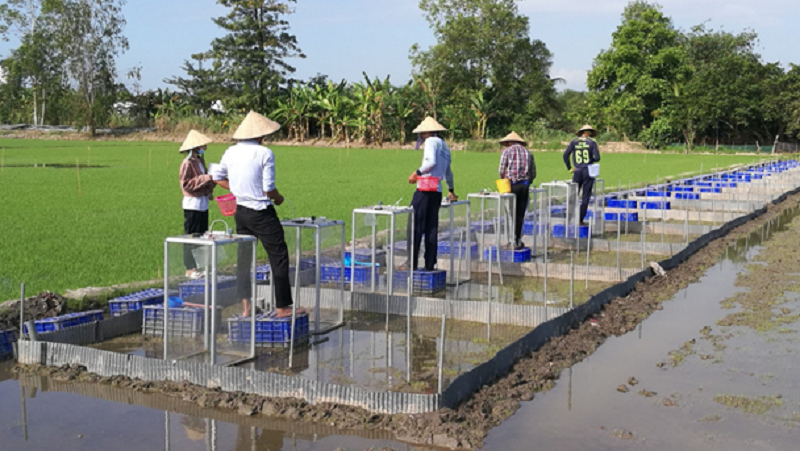Pick Up
358. Development of Comprehensive Agricultural Technologies for Climate Change Mitigation and Adaption in Monsoon Asia

The recently released IPCC report stressed that countries and regions must take measures to adapt to and mitigate climate change as it accelerates at an unprecedented rate.
Agriculture is both a contributor to climate change through greenhouse gas (GHG) emissions and a heavily impacted economic sector. In terms of GHGs, crop and livestock production at the pre-shipment stage is responsible for more than 50% of all anthropogenic methane (CH4) emissions and 75% of all nitrous oxide (N2O) emissions. The total GHG emissions of the food system as a whole, including emissions from pre- and post-production activities, such as fertilizer application, food transport, processing, retailing and waste disposal, have been estimated to be 20-40% or one-third of total anthropogenic emissions.
There is a need for technologies to reduce CH4 from livestock and paddy fields and N2O from soil, fertilizer and manure, which account for a large proportion of the GHGs from agriculture. In addition, there is also a need to develop and disseminate technologies for adapting to extreme weather conditions such as droughts, which are becoming more frequent with climate change. In order to deepen the technologies and implement them in society, it is necessary to be aware of the co-benefits for farmers, present evidence that will lead to behavioral change, develop technologies, and make policy recommendations.
On the other hand, agriculture is highly dependent on local climate, land, and water. Crops and livestock are sensitive to climatic changes such as temperature, water, daylength and light intensity. Therefore, what kind of crops and livestock are easy to grow in a given area is highly dependent on the climate. There is no 'one-size-fits-all-solution' for building climate-resilient and sustainable agricultural production, and it is extremely important to take into account the particularities of agricultural production in each country and region. The Asian monsoon region to which Japan belongs is hot, humid and also suitable for paddy rice cultivation, and about 90% of the methane generated from the world's paddy fields comes from this region. Interregional cooperation is also important for the development and dissemination of GHG reduction technologies.
The project “Development of comprehensive agricultural technologies for climate change mitigation and adaption in Monsoon Asia (Climate change measures in Monsoon Asia)” will develop and implement integrated climate change mitigation and adaptation technologies for countries in the Asian monsoon region that will lead to changes in farmers’ behavior and contribute to the NDCs (Nationally Determined Contributions: GHG reduction targets determined by the country based on Article 4 of the Paris Agreement and mitigation efforts to achieve the targets) of the target countries. A research network among these countries will be established towards the implementation of the following research projects.
- Development of climate change adaptive rice cultivation technology and irrigation water use and management technology
- Development of technology to promote carbon sequestration in tropical soils
- Establishment of a climate-smart livestock production system
- Study and practice of methods for social implementation and dissemination of climate change responsive technologies
Reference
231.Reducing Greenhouse Gas Emissions from Rice Fields https://www.jircas.go.jp/en/program/program_d/blog/20210215
337. Environment-Friendly Dream Technology Also Increases Rice Yield
https://www.jircas.go.jp/en/program/proc/blog/20210715
Contributor: IZUMI Taro (Rural Development Division)
